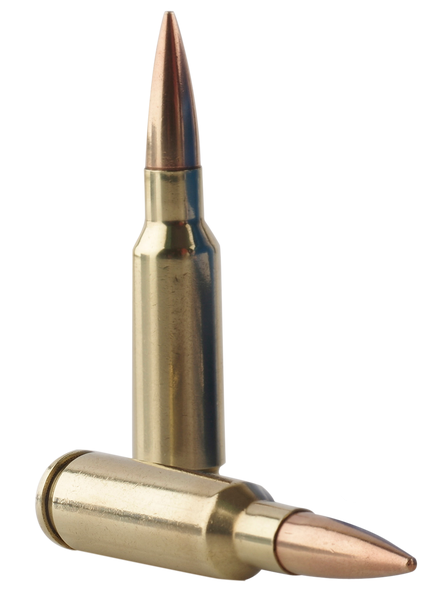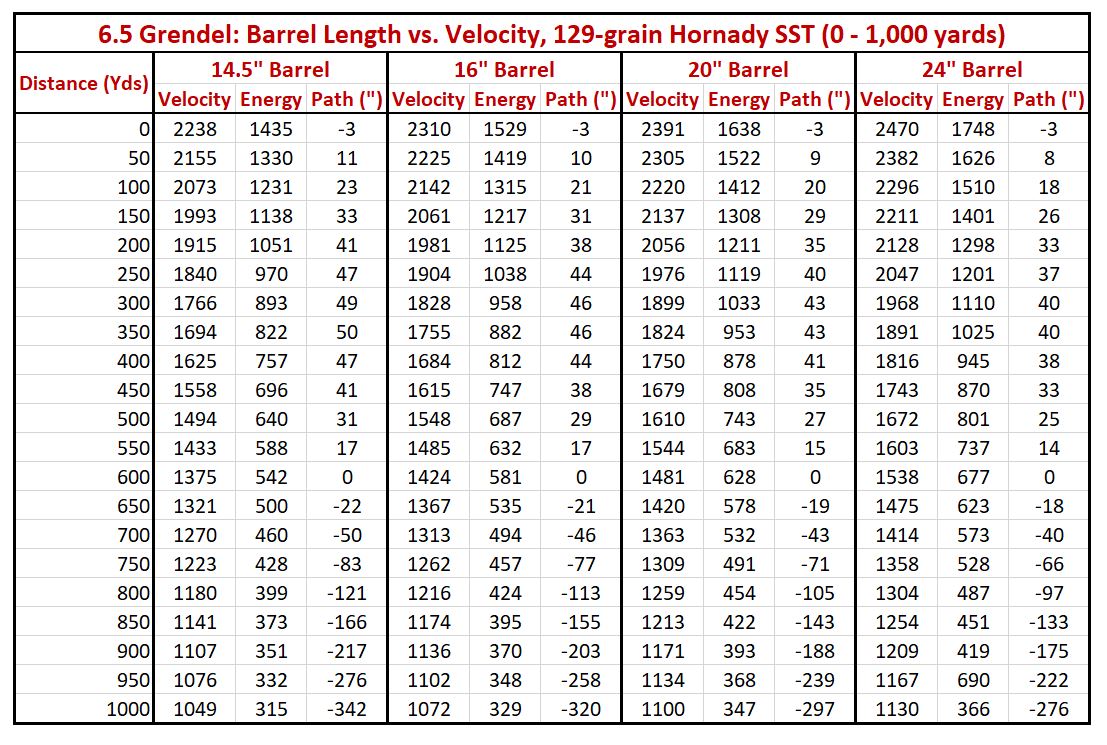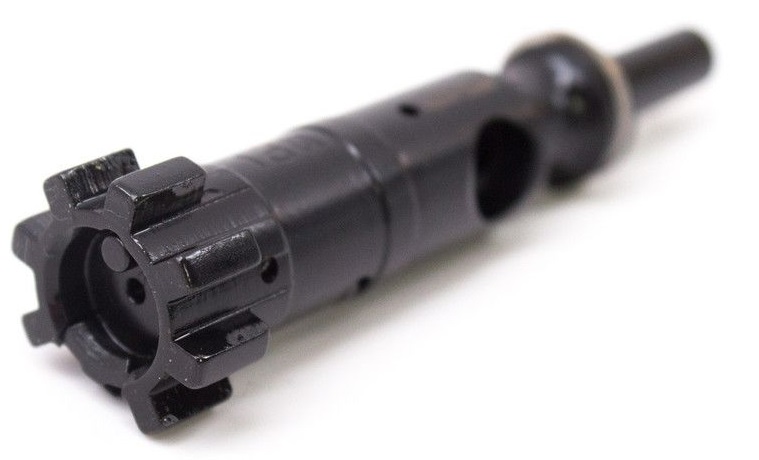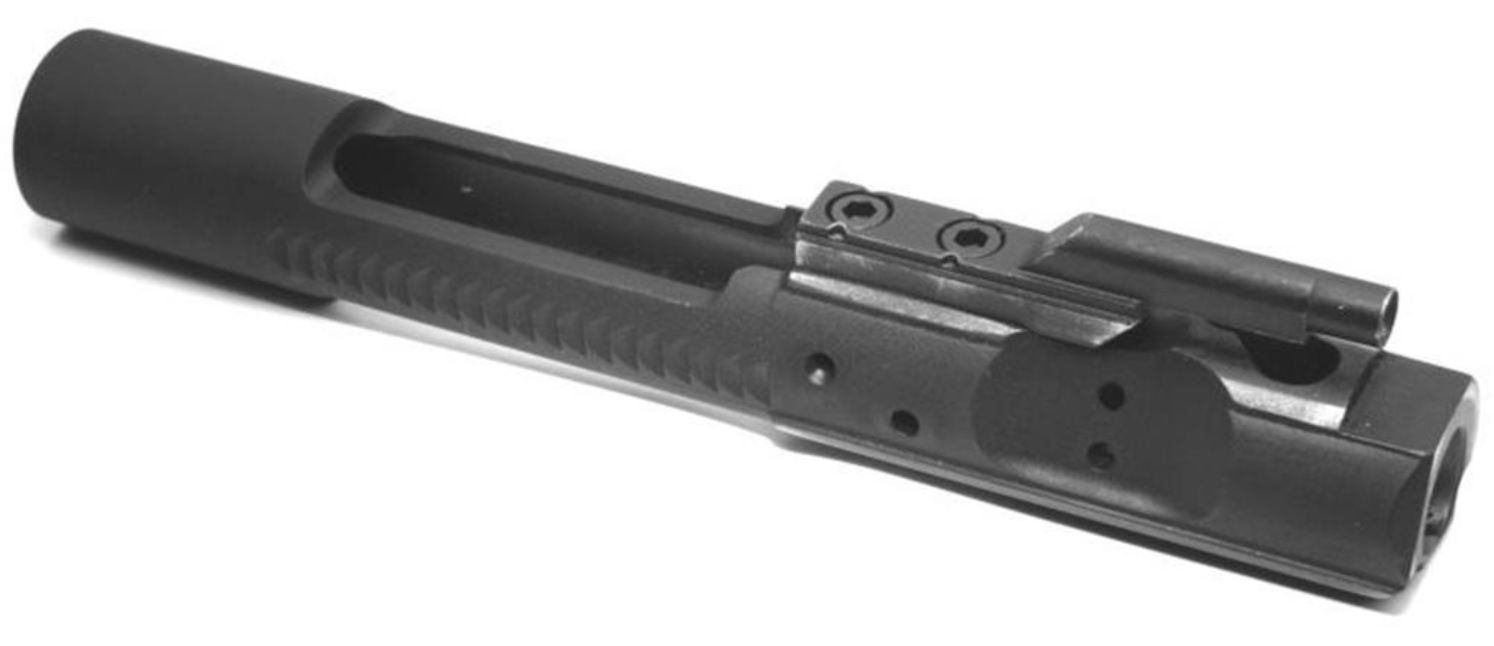The 6.5 Grendel AR-15 Build Guide
Posted by Gun Builders Depot on May 14th 2021
You've probably heard about the high power and accuracy of the 6.5 Grendel cartridge by now. And, you're probably interested in building one. Being able to ring steel at 800 yards using a short-action rifle like the AR sounds pretty epic. Let's review how to build a properly configured Grendel AR-15 so you can maximize your accuracy and fun at the range.
Frequent Questions
Q: What is 6.5 Grendel?
A: 6.5 Grendel is a 6.5mm short-action cartridge based on the .220 Russian, which itself was designed as a combination of the AK-47's 7.62x39mm cartridge and the AR-15's 5.56 NATO. This guide compares Grendel to 5.56 NATO. If you're on the fence about building a 5.56-sized or .308-sized AR, this guide compares Grendel and 6.5 Creedmoor to help you decide.
Q: Why should I bother with 6.5 Grendel at all?
A: For decades, AR owners had to choose between the typical .22-caliber platform, and the .30-caliber AR platform. The 6.5 Grendel effectively bridges that gap: It fits in the .22-caliber AR, yet it provides performance that meets, and often exceeds, that of .308 Winchester. With a properly configured rifle, one can expect to hit targets with high accuracy at 800 yards.
Q: What power and speed can I get out of Grendel?
A: Grendel loads typically house 90-grain to 140-grain bullets. These loads produce between 2,400 and 2,800 feet per second of muzzle velocity with between 1,400 and 1,800 lb-.ft-. of muzzle energy. This truly is the "sweet spot" between 5.56 NATO, whose loads typically weigh 55 to 77 grains and .308, whose loads weigh between 125 and 185 grains.
Q: What about 6.5 Creedmoor? Are these two similar?
A: Yes, in fact: The 6.5 Creedmoor fires the same bullet as Grendel, a 0.264"-diameter round weighing about 90 to 140 grains. Yet Creedmoor utilizes a longer cartridge designed to fit in the .308 AR platform, producing more velocity and thus more performance. Creedmoor can achieve high accuracy beyond 1,000 yards, but the tradeoff is the need to investment in a longer, heavier, and more expensive rifle.
Q: How do I build a 6.5 Grendel AR-15?
A: Building a Grendel rifle (or simply converting an existing AR-15) is quite easy: 6.5 Grendel uses basically every .22-cal AR-15 part, including mil-spec upper and lower receivers and parts kits. You'll need to swap the bolt and extractor, and invest in a longer gas system and longer barrel. We'll go over the optimal configuration next.
Q: So, can I just install a Grendel upper on my 5.56 or .223 lower?
A: Yes! If you already own a .223/5.56 NATO AR-15, you can simply buy a Grendel barreled upper and slap it on your lower receiver. You may need to swap out the buffer in your buffer tube if it's a Carbine buffer. Grendel requires an "H" buffer to handle that extra powder and to reduce felt recoil.
How to Build an AR-15 in 6.5 Grendel

Before we get into the specifications and parts, we need to talk about "official" and "unofficial" 6.5 Grendel cartridges. Annoyingly, there is a cloned version of the official round that requires a different bolt and extractor.
Type 1 vs. Type 2 Grendel

The official 6.5 Grendel is trademarked by its developer, Alexander Arms. That means any company that wants to produce ammunition or parts needs to pay a royalty to the company. Yet two companies, Les Baer Custom and Black Hole Weaponry, decided to skip the trademark and develop their own variants of 6.5 Grendel. Les Bear's cartridge is called the LBC .264, and Black Hole Weaponry's clone is called "Grendel Type 1", a naming convention the company developed to internally differentiate between their loads and parts, and official Alexander Arms-spec loads and parts. LBC and BWH loads are collectively lumped into this "Type 1" identifier. These cartridges utilizes a .125" headspace and 7.62x39mm bolt and extractor. To summarize:
- Trademarked 6.5 Grendel barrels, rifles, and bolts are called "Type 2".
- BHW 6.5 Grendel and .264 LBC rifles and parts are called "Type 1."
- Type 2 bolts use 0.136" headspacing.
- Type 1 bolts use 0.125" headspacing.
When you're building an AR-15 chambered in 6.5 Grendel, it's probably best to stick with Alexander Arms' components and specifications. The official Grendel load is the only one submitted to SAAMI (Sporting Arms and Ammunition Manufacturers' Institute) for testing and certification.
The Best 6.5 Grendel Barrel

The greatest advantages 6.5 Grendel has to offer are two-fold. You get hyper accuracy in a relatively compact rifle. But to get there, you need to get a barrel in the Goldilocks zone: One that's not too long, and not too short. Thankfully, Alexander Arms was pretty clear in their opinion on what works best for a Grendel barrel:
Optimal Barrel Length: 20"
There are always plenty of arguments to be made when it comes to optimal barrel lengths and AR-15s. That's especially true for a short-action cartridge capable of such long distance performance. So, here's a great comparison for 6.5 Grendel's ballistics in a 14.5", 16", 20", and 24" barrel, with velocity, energy, and bullet drop from the muzzle to 1,000 yards. The load being analyzed is a 129-grain Hornady SST:

Data provided courtesy of Alexander Arms.
Let's first analyze bullet drop between these four barrel lengths. At 1,000 yards, the 14.5" barrel sees quite a bit of drop: About 342 inches, or 28.5 feet. Increasing to a 16" barrel results in a 6.8% reduction in drop. Increasing again to a 20" barrel reduces drop by another 7.7%. And we if we continue on to a 24" barrel, we see yet another 7.6% reduction in bullet drop. Although the percentage reduction is consistent, the physical reduction is relatively small at this point: Going from 20" to 24" only reduces bullet drop by 1.75 feet.
If we look at energy retained downrange, 20" yet again seems to be the sweet spot: Adding 4 more inches of barrel only increases energy by 19 lb.-ft. And most importantly, velocity only increases by 30 feet per second. And if we analyze these differences at Grendel's "official" 800-yard range of effectiveness, the differences get even smaller.
So, can you go with a 24" barrel? Absolutely, and you'll still net some minor improvements in performance. But at this barrel length, you'll also need a rifle-length gas system, and your rifle will weigh quite a bit more than a mid-length gassed, 20"-barreled assembly. In this case, such a configuration would serve best as a dedicated bench rifle.
Use a 1:8 (or 1:9) Twist Rate
Since Grendel is all about accuracy at distance, you'll want a relatively fast twist rate to help stabilize the heavier 130- to 140-grain loads. These are the loads that provide the best ballistic coefficient for hitting targets at 800 yards or more. This twist rate will also work well for lighter 90- to 120- grain loads without overstabilizing them. If you're building a shorter, lighter Grendel rifle and prefer to shoot those lighter loads, then a 1:9 twist rate will work best instead.
You'll Need a Grendel Bolt and Extractor

We touched on this when we compared Type 1 and Type 2 loads: You'll need the right Grendel bolt and extractor. Let's dive into this more, just to make sure we select the right components for our bolt carrier group.
"Type 2" (Official) 6.5 Grendel Bolt Specs
To ensure reliability with your new rifle, we recommend sticking with Type 2 Grendel loads. That means you should only run a 6.5 Grendel bolt with these measurements:
- Measuring 2.810" in total length
- Having 0.135" of headspacing
- Having a 0.136" bolt face depth
You Get to Use a 5.56/.223 Bolt Carrier

An AR chambered in 6.5 Grendel can still use a standard M16 or AR-15 bolt carrier, because these rifles also use a typical AR-15 stripped upper receiver and a nearly identical barrel extension. The bolt itself is almost identical in its design and dimensions to a 5.56/.223 bolt, so it fits inside the typical carrier.
Q: Can I use a 5.56 firing pin with my 6.5 Grendel bolt and carrier?
A: Yes. A 5.56/.223 firing pin from an AR-15 or M16 can be used in your 6.5 Grendel when using a proper bolt. The 6.5 Grendel bolt should measure 2.810" in length. Some bolts have been found to measure 2.800", resulting in excessive firing pin protrusion. This can cause pierced primers and damage to the pin.
Q: Can I use a 5.56 bolt with a replacement extractor for Grendel?
A: No. The Grendel cartridge has a wide base diameter and wider lip, so it would not fit inside a 5.56 bolt face.
Use a Regular AR-15 Stripped Upper

Since the Grendel configuration only requires a different bolt and barrel, you get to use a regular AR-15 stripped upper receiver. The exterior dimensions of the Grendel barrel extension are identical to those of a 5.56/.223 extension, and the same barrel nut and threads are used to secure this barrel to the upper receiver. That also means your gas tube diameter will be identical to that of a 5.56 setup.
Grendel Gas System Length

Pretty simple, here: Any Grendel rifle with a barrel measuring up to 20" can use a mid-length gas system. Barrels longer than 20" should use a rifle-length gas system.
Use a Regular AR-15 Lower, Too

Again, since the only parts that differ on a Grendel rifle involve the barrel and bolt, you get to use a regular AR-15 stripped lower receiver. That also means you can use a regular 80% lower if you want to build a custom rifle from scratch. You'll therefore also utilize a standard buffer tube and recoil spring. Speaking of buffer setups...
6.5mm Buffer Weight
Grendel builds are pretty easy: You get to use a standard Carbine or "H" buffer, depending on how much you want to reduce felt recoil. Either buffer should run reliably with generally any setup, though we recommend the heavier (3.8 ounces) buffer for 20"+ barrels, and the Carbine (3.0 ounces) buffer for barrels measuring 18" or less.
Why does Grendel not need a heavier buffer?
The Grendel cartridge produces gas port pressures that are similar to 5.56. Since the gas port pressure remains almost the same, it stands to reason that the same 5.56/.223-weighted buffers work with Grendel, too.
6.5 Grendel Magazines
Although 6.5 Grendel can technically fit inside regular 5.56 and .223 magazines, it's not recommended. The followers and feed lips may interfere with this slightly larger cartridge, resulting in failures to feed or failures to chamber. We recommend using Grendel-specific AR-15 magazines. These magazines maintain the same external dimensions as 5.56/.223 magazines (they do have to fit in a regular AR lower) but the lips and followers are modified to handle the Grendel cartridge with better reliability and proper feeding.
Recap
We covered a lot of technical info, so let's recap the most important things to remember when it comes to building an effective 6.5 Grendel-chambered AR-15:
- Type 2 Grendel is the "official" cartridge trademarked by Alexander Arms
- Type 1 Grendel comprises the "unofficial" cartridges from BHW and LBC.
- Type 2 Grendel uses a 0.135" headspace. Type 1 uses a 0.125" headspace.
- Grendel does best with a 20" barrel, without adding too much length or weight.
- A 1:8 or 1:9 twist rate should be used with 6.5 Grendel cartridges.
- The 1:8 rate is best for match loads, and 1:9 is best for lighter loads.
- Use a mid-length gas system for up to 20" barrel. Use rifle-length for longer barrels.
DISCLAIMER: If you are new to the world of DIY gun building, you likely have a lot of questions and rightfully so. It’s an area that has a lot of questions that, without the correct answers, could have some serious implications. At GunBuilders.com, we are by no means providing this content on our website to serve as legal advice or legal counsel. We encourage each and every builder to perform their own research around their respective State laws as well as educating themselves on the Federal laws. When performing your own research, please be sure that you are getting your information from a reliable source.

